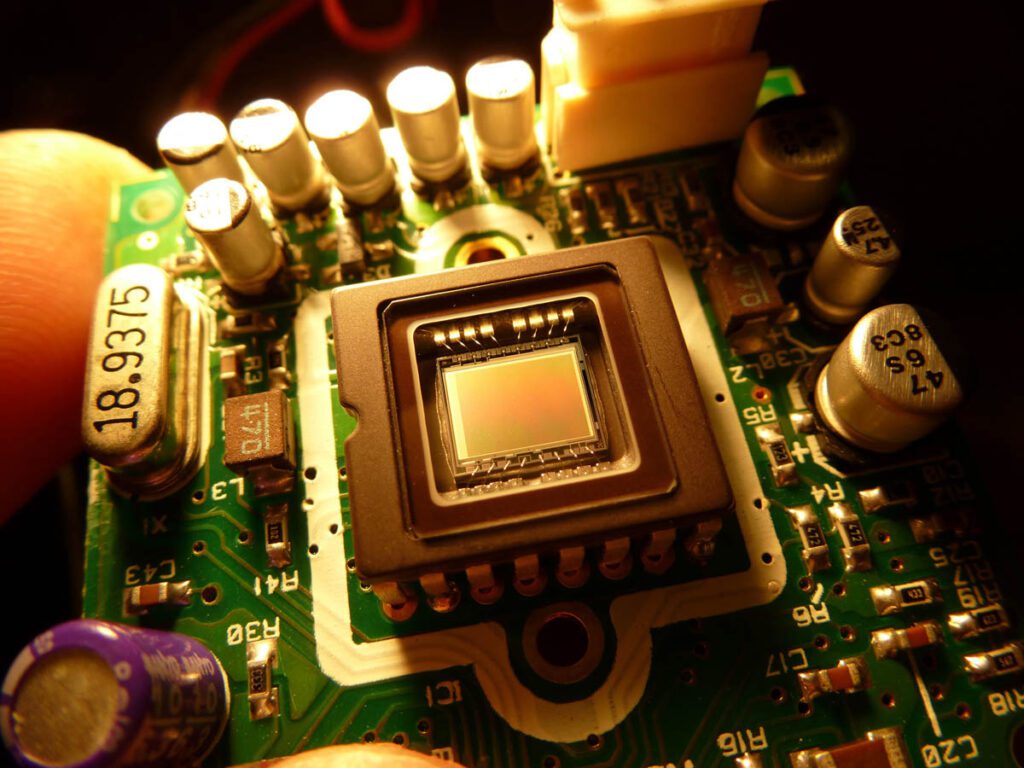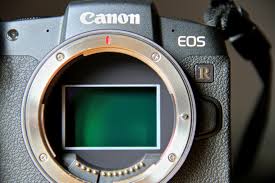Camera sensors are crucial components in digital cameras, including those in your smartphone and professional cameras. They capture light to create images, and different types of sensors have different strengths and weaknesses. Here’s a simple guide to help you understand how they work and what to look for.
What Are Camera Sensors?
Camera sensors are like the eyes of a camera. They detect light and turn it into an image. Think of them as digital film, but instead of film, they use electronic components to capture and process pictures.
Types of Camera Sensors
CCD (Charge-Coupled Device) Sensor
- How They Work: CCD sensors gather light and move the information to a single point where it’s processed.
- Pros: Known for clear and detailed images with less noise (random spots or graininess).
- Cons: They use more power and are more expensive to make.
CMOS (Complementary Metal-Oxide-Semiconductor) Sensors
- How They Work: CMOS sensors have tiny amplifiers at each pixel (tiny light-capturing spot), which lets them process images faster and more efficiently.
- Pros: They use less power, cost less, and can capture images quickly.
- Cons: They used to have more noise, though this has improved over time.

Key Features to Understand
Resolution
- What It Is: Resolution refers to the number of pixels (tiny dots) in an image. More pixels mean more detail.
- Why It Matters: Higher resolution is great for making large prints or cropping photos without losing detail.
Sensor Size
- What It Is: The physical size of the sensor.
- Why It Matters: Larger sensors capture more light, which means better quality images, especially in low light.
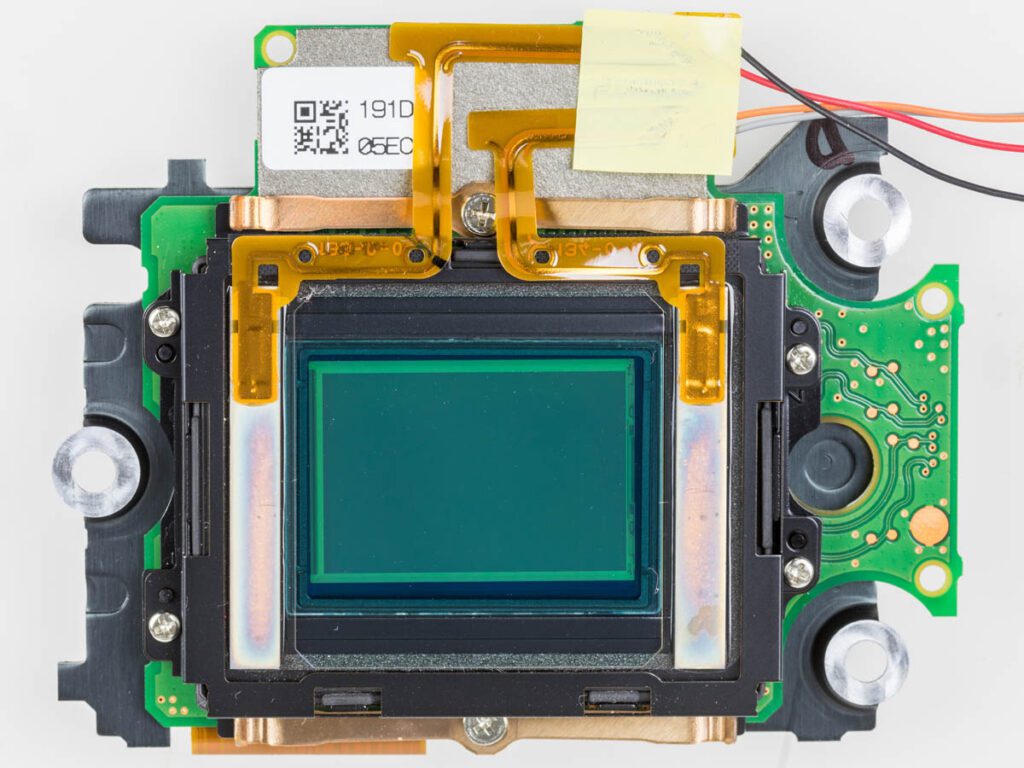
Dynamic Range
- What It Is: The range between the darkest and lightest parts of an image.
- Why It Matters: A wider dynamic range means better detail in both very dark and very bright areas of your photo.
Noise Levels
- What It Is: Noise refers to random specks or graininess in your photos.
- Why It Matters: Less noise means cleaner, clearer images, especially in low-light conditions.
Color Accuracy
- What It Is: How well the sensor captures true colors.
- Why It Matters: Better color accuracy means your photos will look more like what you see with your eyes.

Choosing the Right Sensor for You
- For Everyday Use: Most smartphones and compact cameras use CMOS sensors because they’re affordable and efficient. They are good enough for casual photography and everyday use.
- For Better Image Quality: If you’re looking for clearer images, especially in low light, a camera with a larger sensor or advanced CMOS sensor might be a better choice.
- For Professional Photography: Professionals often use cameras with larger sensors and advanced features like BSI (Backside Illuminated) sensors or stacked sensors, which provide excellent image quality and performance in various conditions.
Difference between CCD and CMOS camera sensors
CCD (Charge-Coupled Device) and CMOS (Complementary Metal-Oxide-Semiconductor) sensors are two types of image sensors used in cameras, each with its own characteristics:
CCD Sensors:
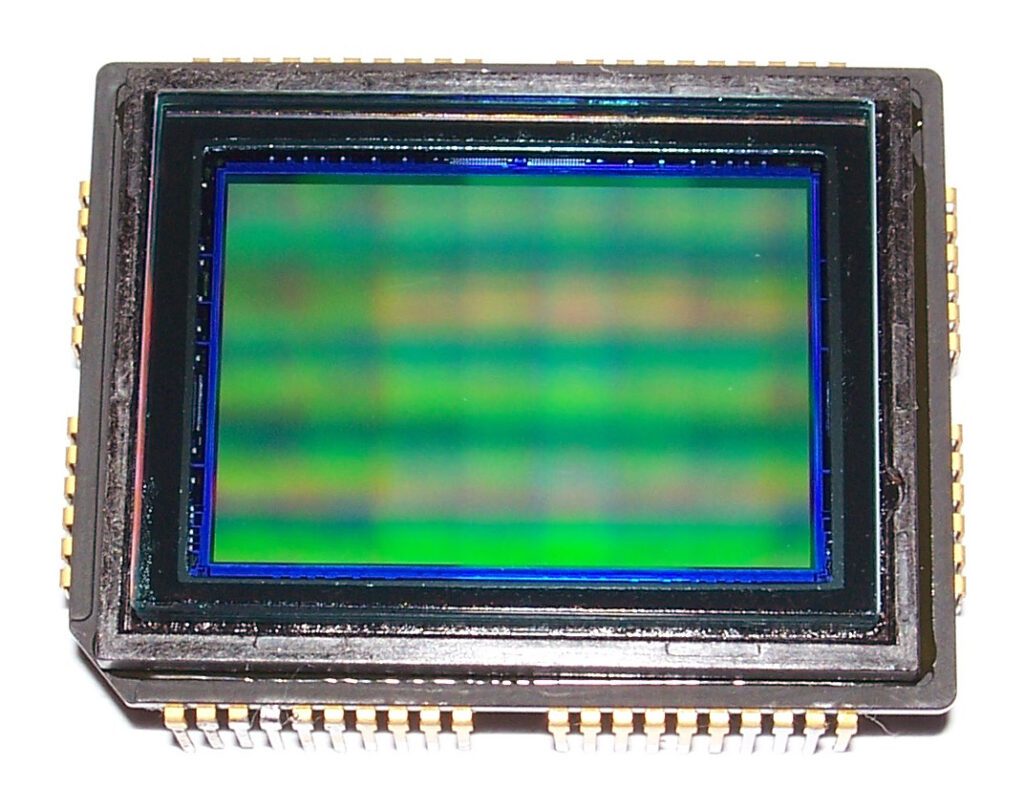
- Operation: CCD sensors transfer charge across the chip and convert it into a voltage at a single output node. The image data is processed off-chip.
- Image Quality: Historically, CCDs have been known for high image quality, with better color accuracy and lower noise levels. They excel in low-light conditions and are often used in high-end imaging applications.
- Power Consumption: CCD sensors generally consume more power compared to CMOS sensors, which can impact battery life in portable devices.
- Cost: CCDs are typically more expensive to manufacture and integrate, which can increase the overall cost of the camera.
- Speed: CCD sensors are usually slower in terms of readout speed, which can affect performance in high-speed photography.
CMOS Sensors:
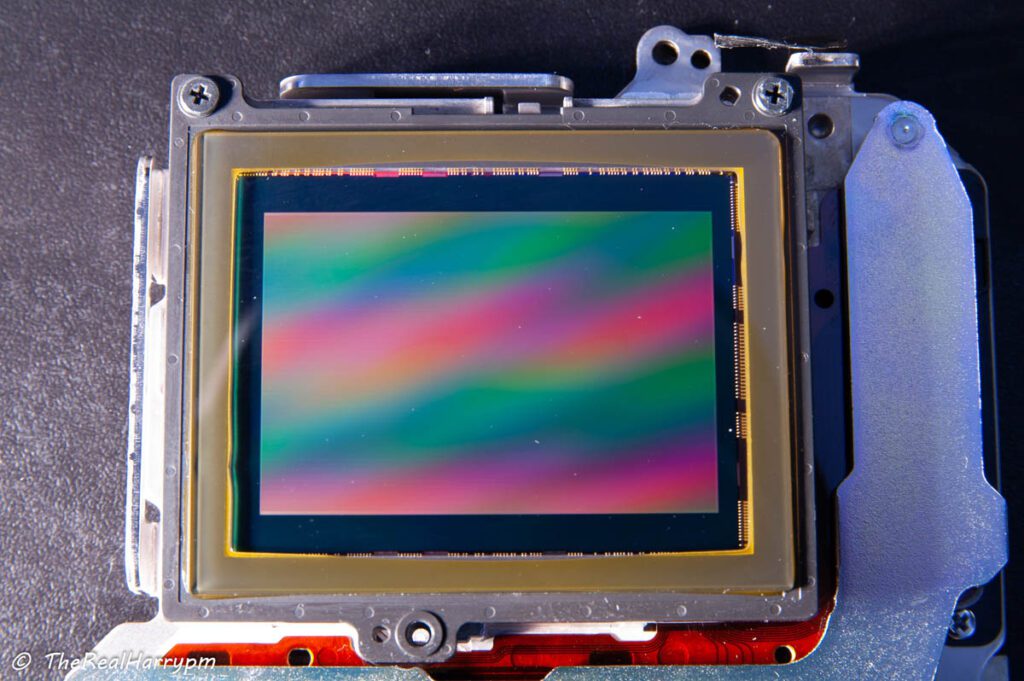
- Operation: CMOS sensors use a different technology where each pixel has its own charge-to-voltage conversion, and the data is processed on-chip. This allows for faster readout and processing.
- Image Quality: CMOS sensors have improved significantly and now offer excellent image quality, though they might not always match CCDs in terms of noise levels and color accuracy, especially in very low light conditions.
- Power Consumption: CMOS sensors are more power-efficient, which helps in extending battery life in devices like smartphones and digital cameras.
- Cost: CMOS sensors are generally cheaper to produce and integrate, making them more common in consumer electronics.
- Speed: CMOS sensors typically offer faster readout speeds, making them better suited for high-speed photography and video recording.
Current Trends in Camera Sensor Technology
Camera sensor technology is constantly evolving, driven by the need for higher image quality, better performance, and greater efficiency. Here’s a more detailed look at some of the most exciting and significant trends in camera sensors today:
1. Backside Illuminated (BSI) Sensors
How They Work: Traditional camera sensors have their light-sensitive photodiodes buried under various layers of electronic circuitry, which can block some incoming light. BSI sensors, on the other hand, flip the sensor around so that the photodiodes face the incoming light, reducing the distance light must travel and allowing more light to reach the sensor.
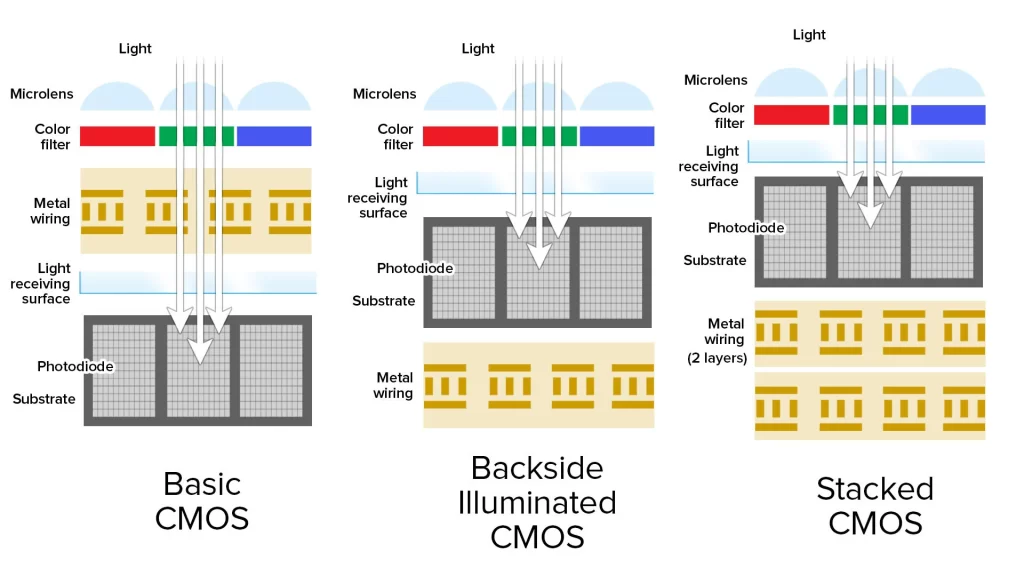
Advantages:
- Improved Low-Light Performance: Since more light reaches the photodiodes, BSI sensors perform better in low-light conditions, reducing noise and improving image clarity.
- Better Detail in Shadows: Enhanced ability to capture details in darker areas of the image.
Applications: Common in smartphones and consumer cameras where low-light performance is crucial for capturing clear images without a flash.
2. Stacked Sensors
How They Work: Stacked sensors separate the light-capturing layer (photodiodes) from the processing layer (circuitry). This stacking allows the sensor to have a dedicated processing layer that speeds up data readout and reduces the load on the photodiodes.
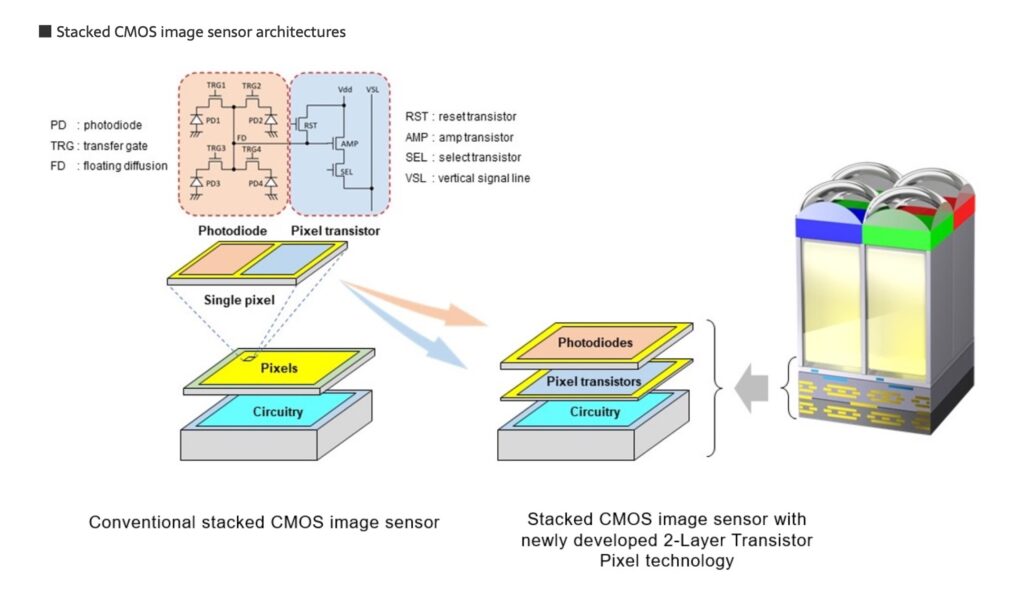
Advantages:
- Faster Data Processing: The separation of light capture and processing allows for quicker readout speeds, which is essential for high-speed photography and video recording.
- Reduced Image Noise: Improved processing can help in reducing noise and enhancing image quality.
Applications: Ideal for high-end smartphones, action cameras, and professional video cameras where high-speed imaging and superior image quality are required.
3. Global Shutter Sensors
How They Work: Unlike traditional rolling shutters that scan the image line by line, global shutters capture the entire image at once. This means that every part of the image is exposed to light simultaneously.
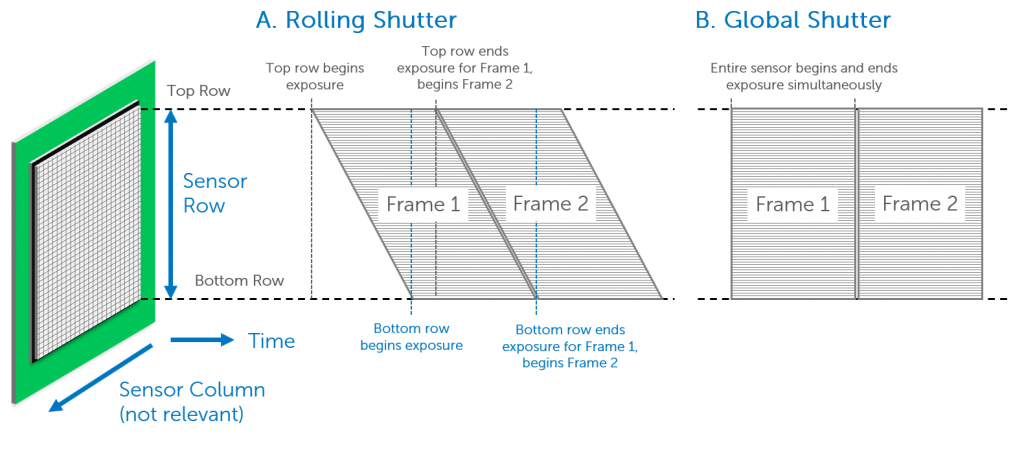
Advantages:
- Reduced Motion Artifacts: Global shutters prevent distortions and blurring caused by moving subjects or fast camera movements, which is especially useful in dynamic scenes.
- Better for High-Speed Photography: They allow for capturing sharp images of fast-moving objects.
Applications: Useful in sports photography, scientific imaging, and any situation involving rapid motion where distortion needs to be minimized.
4. High Dynamic Range (HDR) Sensors
How They Work: HDR sensors capture multiple images at different exposure levels and combine them into a single image that represents a broader range of brightness levels.
Advantages:
- Enhanced Detail: Better representation of both very dark and very bright parts of an image.
- Improved Image Quality: More balanced exposure across the entire image, reducing the likelihood of blown-out highlights or blocked shadows.
Applications: Common in both consumer and professional cameras, particularly in scenarios with challenging lighting conditions such as landscapes and high-contrast scenes.
5. Larger Sensor Sizes
How They Work: Increasing the physical size of the sensor allows for larger individual pixels, which can capture more light and detail.
Advantages:
- Better Low-Light Performance: Larger sensors generally perform better in low light due to larger pixel sizes that capture more light.
- Shallower Depth of Field: Larger sensors can achieve a more pronounced background blur (bokeh), which is desirable for portrait photography and artistic effects.
Applications: Found in high-end DSLRs and mirrorless cameras, used by professional photographers and enthusiasts who demand the best image quality.
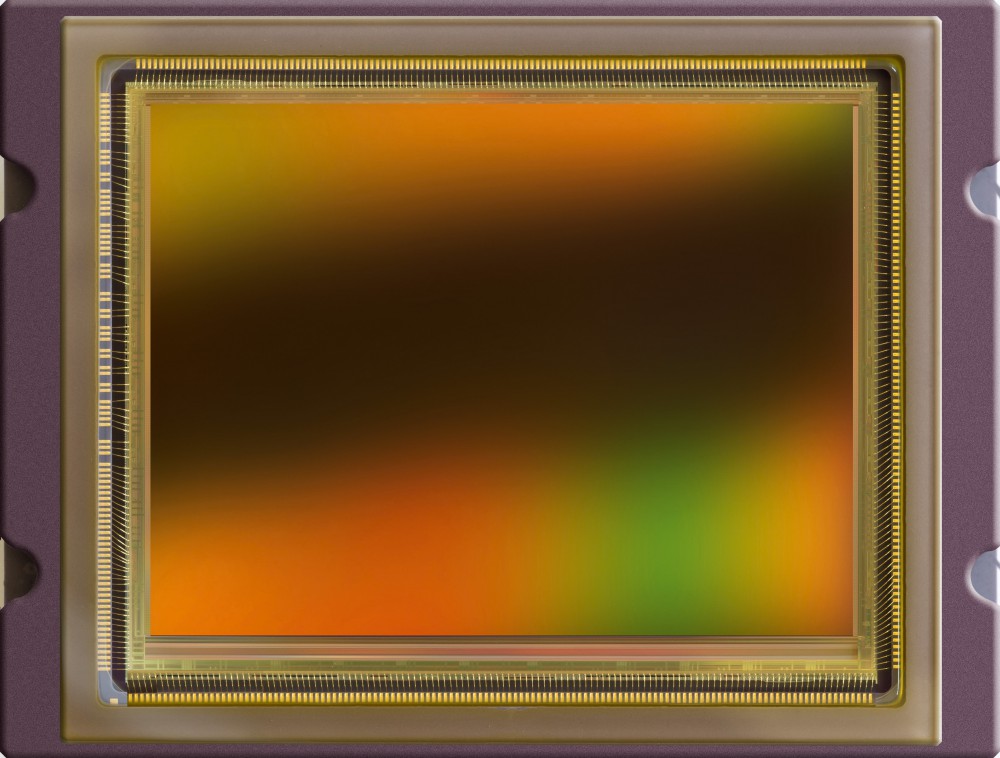
6. Advanced Pixel Technologies
How They Work: Technologies such as Dual Pixel and Quad Bayer arrays enhance the functionality of individual pixels, allowing for better autofocus and improved color accuracy.
Advantages:
- Faster Autofocus: Dual Pixel technology allows for phase detection focusing directly on the sensor, improving focusing speed and accuracy.
- Enhanced Color Reproduction: Quad Bayer sensors use a pattern that improves color accuracy and low-light performance.
Applications: Often used in modern smartphones and advanced compact cameras to improve focusing and overall image quality.
7. Computational Photography Integration
How They Work: Computational photography uses advanced algorithms and processing power to enhance images beyond what the sensor alone can achieve. This includes techniques like multi-frame noise reduction, artificial intelligence enhancements, and real-time image adjustments.
Advantages:
- Improved Image Quality: Enhances details and reduces noise or distortions that might not be possible with hardware alone.
- Creative Effects: Offers features like portrait mode, night mode, and virtual backgrounds that enhance the photographic experience.
Applications: Widely used in smartphones and increasingly in other digital cameras to provide users with advanced features and improved image quality without needing to change hardware.
Summary
Camera sensors are essential for capturing photos, and understanding their features helps you choose the right camera for your needs. Whether you’re using a smartphone or a high-end camera, knowing about sensor types, resolution, size, and other factors can help you take better photos and make the most out of your camera equipment.

